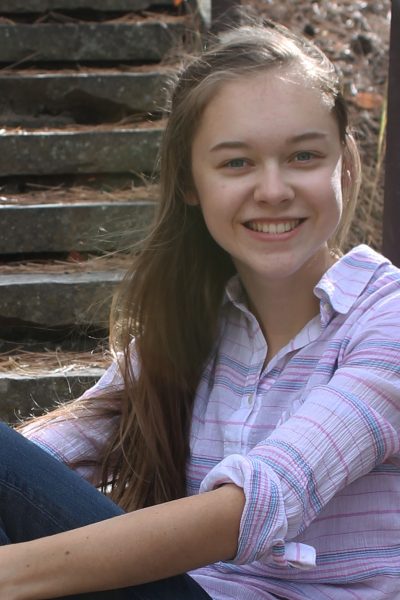 “Of course, you had to “go big” I told my November-stressed self. The rest of Dr. Payne’s Public History (HIST 479) class had picked normal internships at local museums or archives. Logical, plausible internships. Not crazy, long-shot internships. And here I was, trying to finish an application for the Smithsonian National Museum of American History (NMAH).
“Of course, you had to “go big” I told my November-stressed self. The rest of Dr. Payne’s Public History (HIST 479) class had picked normal internships at local museums or archives. Logical, plausible internships. Not crazy, long-shot internships. And here I was, trying to finish an application for the Smithsonian National Museum of American History (NMAH).
The journey to my internship started long before that November afternoon when I sat in the library regretting my optimistic, early semester plans. Growing up, I had always loved the stories of history, and during my high school years I discovered I loved sharing those stories with the public. As much as I enjoyed history, however, I knew I did not want to teach—as a homeschooled kid, classrooms were not my thing. A friend, however, had introduced me to the field of “Public History,” and I began my undergraduate journey at CSU knowing that was the career path I wanted to follow. Public History would allow me take my passion for history and share it with a wide audience in a setting I loved and believed was more impactful—museums, archives, and historic sites. The only problem was, I didn’t know what Public History truly entailed. When Dr. Orsi recommended I take Dr. Sarah Payne’s Public History course (HIST 479), I jumped on the idea. “It would give you valuable tools and insight into the field,” I told myself. Not to my surprise, the course was amazing and it gave me helpful tools and new perspectives on the field of Public History. It gave me something more important, however—it gave me the drive to pursue my goals.
The final project of Public History involved completing an application for an internship in the field of Public History, and by mid-September I had decided to apply to some large historic sites and museums. “After all,” I told myself, “you might as well try.” Come November, however, I found myself wondering what I’d been thinking. I probably would have given up, too, if there had not been a class deadline staring me in the face. With the prodding of a deadline and the amazing wisdom of Dr. Payne (she knows this field incredibly well), I completed the class project draft by December. Filling out all the necessary materials, however, was quite a different endeavor, and the process dragged long into February. For those who might not be familiar with the application process, it involves many long nights staring at Federal websites (which are not intuitive) and dozens of emails to professors and employers asking for letters of recommendation. After locating the Smithsonian intern website, you must hunt down the correct form for the internship you want to apply for. Each particular internship has different requirements. Then, digitally, you fill out some of your basic information along with education history and related skills and experience (usually in the form of a Resume). The Application also requires an essay, multiple short answer questions, and two letters of recommendation. A word of wisdom—this application is not impossible (though it may seem so) but will take a long time! Finally, however, the application was complete and mailed—albeit digitally—to the Smithsonian.
As much as I wanted this internship, I fully expected that to be the end of the process. “Well, that was good training,” I thought. “Now you know how to apply for it next year.” But, nearly a month later, I suddenly found myself in the middle of a whirlwind interview and acceptance process. Suddenly I was a future intern at the National Museum of American History!
As a “Public Programs” intern my main job will consist of learning the methods and practices behind museum education. Behind the scenes, I will work with a team of other interns and Smithsonian employees to create an engaging interpretation program for museum visitors, as well as learning how programs go from concept to implementation and how current programs are evaluated. A large part of this internship also includes participating in current public programs within the museum, both formal (presentation based) and informal (conversation focused). This part of the internship is focused on teaching young historians how to professionally engage with visitors of various ages and backgrounds with the goal of helping them better understand and engage with history. I am particularly excited about learning the Smithsonian’s unique approach to education—encouraging visitors to dialogue about history (both the good and bad) in order to understand how history has influenced their society and culture. I am excited to be able to dialogue about and see pieces of our early American past, sections of our history that, living here in Colorado, I have never been able to see for myself—the Star Spangled Banner exhibit for instance. Besides, who would turn down the opportunity to spend a summer surrounded by so many pieces of our American heritage!
As I look forward to my summer in D.C., I often think I am just as crazy now as I was in September. The flurry of paperwork has not stopped, even after my application was approved. Now surrounded by Federal forms, fingerprinting cards (yes you have to be fingerprinted to work at the Smithsonian), background checks, and housing applications I am beginning to realize what the process of becoming even an intern in this field requires. I am excited, however, to see how my understanding of history and the field of Public History will change and grow this summer. My hope is that this internship will help me apply my history training to the public sector and help me further decide which path of Public History I want to take in the future.